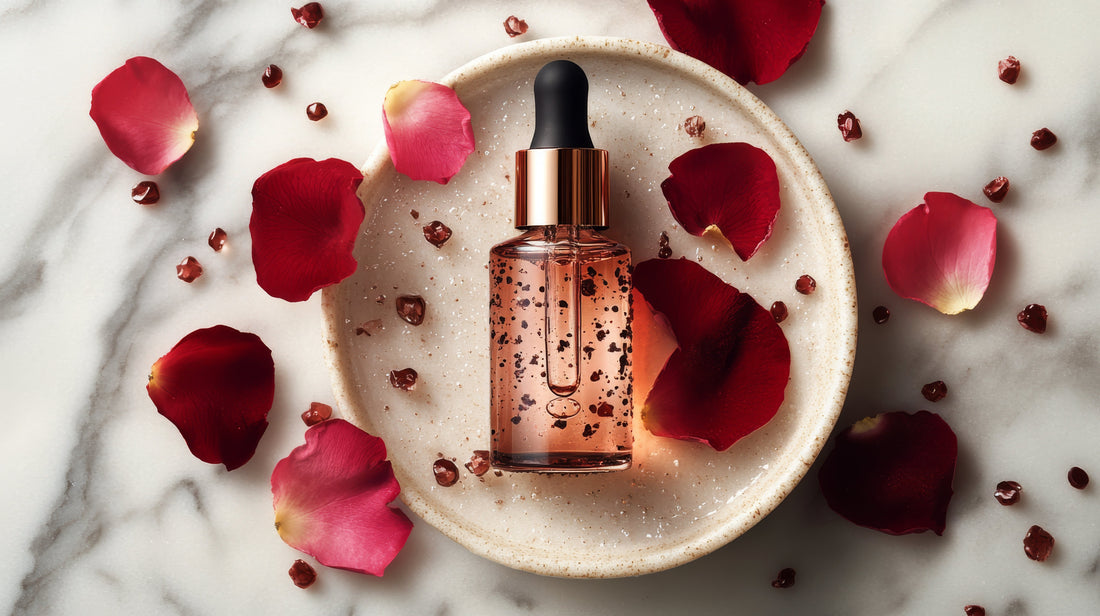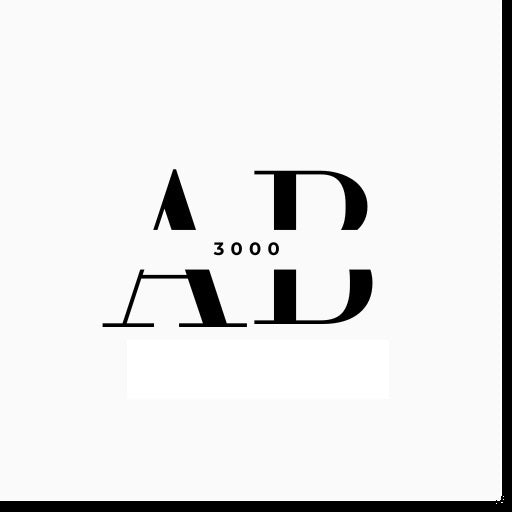
Know This About Retinol: The Skincare Miracle
Share
What is Retinol and How Does It Work?
Retinol has become one of the most talked-about ingredients in skincare, and for good reason. With its powerful anti-aging properties, acne-fighting abilities, and capacity to transform skin texture, it’s no surprise that it has earned a permanent spot in skincare routines. But what exactly is retinol, how should it be used, and why is it so effective? In this comprehensive guide, we’ll break down everything you need to know about retinol, from its benefits to how to incorporate it into your skincare routine.
Retinol, a derivative of Vitamin A, is a type of retinoid, a class of compounds that work wonders for the skin. Retinol works by stimulating collagen production, accelerating cell turnover, and improving skin texture. This results in smoother skin, fewer wrinkles, and less pigmentation. It’s also effective at combating acne by clearing out clogged pores, preventing breakouts, and reducing the appearance of scars. For anyone serious about skincare, retinol is often considered a must-have ingredient. However, understanding how to properly use it is key to reaping its full benefits.
At its core, retinol is a form of Vitamin A that plays a crucial role in skin cell renewal. Our skin naturally sheds dead skin cells, but as we age, this process slows down, leading to dull, uneven skin tone and the formation of fine lines and wrinkles. Retinol speeds up this process, encouraging the shedding of old skin cells and replacing them with fresh ones. This promotes a smoother, more youthful appearance and helps reduce signs of aging. In addition to improving skin texture, retinol also boosts collagen production, which is essential for maintaining skin’s firmness and elasticity.
Retinol’s ability to increase skin cell turnover also makes it incredibly effective for acne-prone skin. By preventing the buildup of dead skin cells inside the pores, it reduces the likelihood of breakouts. It can also help to fade acne scars over time by promoting the growth of new, healthy skin cells.
Retinol is commonly found in various skincare products, including serums, creams, and oils. When used properly, it can transform your skin and give you a glowing, more youthful complexion. But how exactly should you incorporate retinol into your routine, and how can you avoid common mistakes?
The Benefits of Retinol
One of the main reasons retinol has become such a popular ingredient in skincare is its wide range of benefits. Whether you're dealing with acne, signs of aging, or uneven skin tone, retinol is a versatile solution that addresses multiple skin concerns. Below are some of the most notable benefits of using retinol.
1. Reduces the Appearance of Fine Lines and Wrinkles:
As we age, our skin produces less collagen, leading to the development of wrinkles and fine lines. Retinol helps stimulate collagen production, which makes the skin appear firmer and more plump. This helps reduce the visibility of fine lines and wrinkles, leading to smoother, more youthful-looking skin.
2. Improves Skin Texture:
Retinol promotes faster cell turnover, which helps to reveal fresher, smoother skin. By accelerating the shedding of dead skin cells and encouraging new cell growth, retinol can refine the texture of your skin, making it feel softer and look more radiant.
3. Fights Acne:
One of the reasons retinol is so effective for acne is its ability to unclog pores. It helps to remove dead skin cells from the surface, which reduces the likelihood of clogged pores. Retinol also helps to reduce inflammation and prevent new breakouts, making it a powerful tool in the fight against acne.
4. Evens Out Skin Tone:
In addition to its anti-aging and acne-fighting properties, retinol is also effective for addressing pigmentation issues such as dark spots, hyperpigmentation, and sun damage. By encouraging the shedding of skin cells and promoting the growth of new, healthy skin, retinol can help fade discoloration and even out your skin tone.
5. Reduces the Appearance of Acne Scars:
Acne scars can be a frustrating reminder of breakouts, but retinol can help minimize their appearance. By speeding up the skin's natural healing process and encouraging new cell growth, retinol helps to fade dark spots and scars, leaving behind smoother, more even skin.
Discover Iope Retinol and TonyMoly Red Retinol Collection on AgelessBeauty3000.com.
How to Incorporate Retinol into Your Skincare Routine
Incorporating retinol into your skincare routine may seem intimidating at first, but with the right approach, it can be simple and effective. Here’s how you can use retinol safely and see the best results:
Start Slow:
If you’re new to retinol, it’s important to start slowly. Begin by using a low concentration of retinol (around 0.25% to 0.5%) two to three times a week. This will allow your skin to build tolerance without causing irritation. Over time, you can gradually increase the frequency and concentration of the product as your skin becomes accustomed to retinol.
Use It at Night:
Retinol should always be applied at night because it can make your skin more sensitive to the sun. Apply it after cleansing and before moisturizing. If you’re new to retinol, start by using it at night only, and remember to wear sunscreen during the day.
Apply a Pea-Sized Amount:
When applying retinol, a little goes a long way. A pea-sized amount is usually enough for your entire face. Gently massage it into your skin, focusing on areas with fine lines, acne, or hyperpigmentation.
Moisturize:
Since retinol can cause dryness and irritation, it's important to follow up with a hydrating moisturizer to keep your skin nourished and balanced. You can also use a hydrating serum that contains ingredients like hyaluronic acid or glycerin to lock in moisture.
Be Patient:
Results from retinol don’t happen overnight. It can take anywhere from a few weeks to a couple of months before you start seeing noticeable improvements in your skin. Consistency is key, so make sure to include retinol in your routine regularly to reap the long-term benefits.
Common Side Effects of Retinol
While retinol is generally safe for most people, it can cause some side effects, especially when you’re first starting. Some common side effects include:
-
Redness: Retinol can cause redness and irritation, especially in the beginning when your skin is adjusting. This is normal, but if the irritation becomes severe, you may need to reduce the frequency of use or switch to a gentler form of retinoid.
-
Dryness and Peeling: Because retinol speeds up cell turnover, it can cause dryness, flakiness, and peeling as your skin sheds dead cells. Be sure to hydrate your skin well to prevent excessive dryness.
-
Purging: In the early stages of using retinol, you might experience "purging," where you get more breakouts than usual. This happens as retinol brings impurities and dead skin cells to the surface. Once the purge phase is over, your skin should clear up and look smoother.
If you experience severe irritation, it’s always a good idea to consult with a dermatologist for advice on how to adjust your retinol usage.
Retinol Myths and Facts
There are several myths surrounding retinol, and it’s important to separate fact from fiction to ensure you’re using it correctly. Let’s debunk a few common myths:
Myth 1: Retinol is only for older skin.
Fact: While retinol is known for its anti-aging benefits, it’s also great for people of all ages. It helps with acne, uneven skin tone, and texture, making it suitable for anyone looking to improve their skin’s appearance.
Myth 2: Retinol thins your skin.
Fact: Retinol does not thin the skin; rather, it increases cell turnover and stimulates collagen production, making the skin thicker and more resilient over time.
Myth 3: You can’t use retinol with other active ingredients.
Fact: While it’s important to be cautious when combining retinol with other actives, it can be used effectively with ingredients like hyaluronic acid, Vitamin C (in the morning), and peptides. However, it’s best to avoid using retinol alongside other potent exfoliants like AHAs and BHAs to prevent irritation.
Conclusion
Retinol is undoubtedly one of the most powerful ingredients in skincare, with its ability to reduce fine lines, improve texture, fight acne, and fade pigmentation. By incorporating retinol into your routine correctly and with patience, you can experience significant improvements in your skin’s appearance. Start slow, be consistent, and always wear sunscreen during the day to protect your newly rejuvenated skin. With time and care, you’ll unlock the full potential of retinol and enjoy smoother, more youthful-looking skin.
Discover Skincare on AgelessBeauty3000.com.
IOPE | Retinol Expert 0.1% Wrinkle Corrector
IOPE | Retinol Super Bounce Serum
TONYMOLY | Red Retinol Radiance Cream
TONYMOLY | Red Retinol Wrinkle Focus Eye Cream
